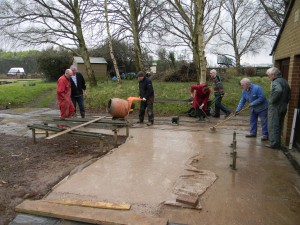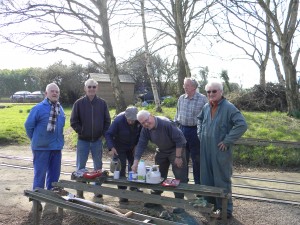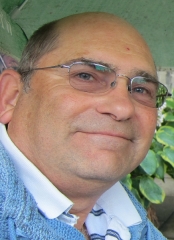Last time we looked at AgentJayZ, a professional jet engine technician from Canada. As a professional, he has a wide range of skills and in-depth knowledge into a well known subject, and of an engineering marvel in which millions of people depend upon, and trust their lives, constantly every day. However, not all engineering is undertaken as a job, and instead as a hobby. A prime example is every member of the BSMEE, and today’s channel is comprised of people doing exactly what we do: Engineering for fun.
Some people think that this group are amazing, others think they are quite simply crazy, others think that what they are doing is a hoax. However, I am pretty sure what they are doing is real, and if it is not, or they fail in their aim, the engineering expertise that they express is most certainly convincing, and amazing.
The group is Copenhagen Suborbitals, and their primary aim is to be the first group to send a person into space on private money, and not for profit. Based in their namesake city in Denmark, they are constructing all of the components of a spaceship, with funding coming from donators and sponsors
The project’s secondary objective is to prove that space flight is not just an expensive governmental project, and can be undertaken by others. In moving towards this aim, they operate the project as an ‘open source’ project, which means that the work that they produce is not copyright protected, and they state that they intend to share all of their technical information as much as possible, within EU export control laws. The project is undertaken by over 35 people, with the two founders being Peter Masden and Kristian von Bengtson.
Peter Masden is an aerospace engineer in charge of the launch vehicle, including the rocket motors that propel the vehicle. He has worked in the past on constructing his own private submarines, including UC3 Nautilus, inspired by the submarine of the same name found in the novel Twenty Thousand Leagues Under the Sea by Jules Verne. Nautilus for a time powered the floating launch platform for Copenhagen Suborbitals, Sputnik.
Kristian von Bengtson is an architect, with a long history in space research. In 2005 he participated in simulated Mars habitation at the Mars Desert Research Station un Utah, USA, and in 2006 graduated with a masters degree in Aerospace Science from the International Space University, Strasbourg, France. Kristian is responsible for spacecraft design, and also functions as the flight director.
Currently, the majority of the team’s efforts are focussed on the two ends of the space flight: launch and re-entry. Peter’s team have created a number of rocket motors over the years, including recently the TM65, a 65 kN (14,600lbf) rocket motor designed to prove the feasibility of a simply designed liquid propellant rocket. The motor was a minor success, as while it did prove the possibility, the fuel delivery system was not powerful enough, and they are now looking into the possibility of attaching a turbo pump, instead of forcing the propellant and oxidiser out by adding pressurised helium or nitrogen. They are also working on a new rocket, Sapphire, which is to be a test bed for active guided rocketry, and is planned for a test launch sometime in June this year.
Rocket tests at Copenhagen Suborbitals come in two different flavours: The static test, and the launch test. The static test is performed at their base by anchoring the motor to the ground, and launching the rocket. While this provides the team with the opportunity to capture more test data, as the motor is not moving, the sound waves produced by the motor can be damaging, and therefore have to be damped through the use of a water suppression system. The rocket also needs to be anchored in a satisfactory way, and this is performed through the use of large concrete blocks, and even larger bolts!
Launching the rocket has the distinct advantage of not needing to anchor the rocket to the ground. However, this also means that the rocket has to be launched into an area of space where it will do no harm, and for this, they launch the from a vessel out to sea. This job is performed by Sputnik. The rocket is loaded onto Sputnik in port, where it then moves under its own power out to sea, and then evacuated for launch.
Kristian von Bengtson is currently focussing on the other end of the flight. One of the major objectives of a space capsule is to return its occupants back to earth in a safe manner. This means that the capsule must not undergo forces dangerous to people. Therefore the shape of the capsule, and how this influences its centre of pressure, or where the aerodynamic forces act from, is important. Therefore Kristian is currently testing various designs at a 1/10th scale size in a vertical wind tunnel, in a similar manner to how early UK attempts at capsule re-entry were tested. This includes the addition of ‘drogue chutes,’ small parachutes that are not aimed at reducing the velocity of the capsule, but aimed at drastically changing the centre of pressure to a more advantageous, and safe, location, in reference to the capsule itself.
The videos found on Copenhagen Suborbitals’ channel page focus on current developments. As well as showing videos of tests, a number of videos have also been produced where the experts talk about how the various components that go into their project work, and the principles behind them. The projects that Copenhagen Suborbitals performs may seem, quite literally, out of this world, but ultimately I believe that the work that these people do will ultimately result in truly what will be called the space age.
Below are a number of links to various websites relating to Copenhagen Suborbitals, including their YouTube channel page.
http://www.youtube.com/user/CphSuborbitals
http://www.copenhagensuborbitals.com/
http://www.wired.com/wiredscience/rocketshop
https://twitter.com/KvonBengtson
John Chaddock



